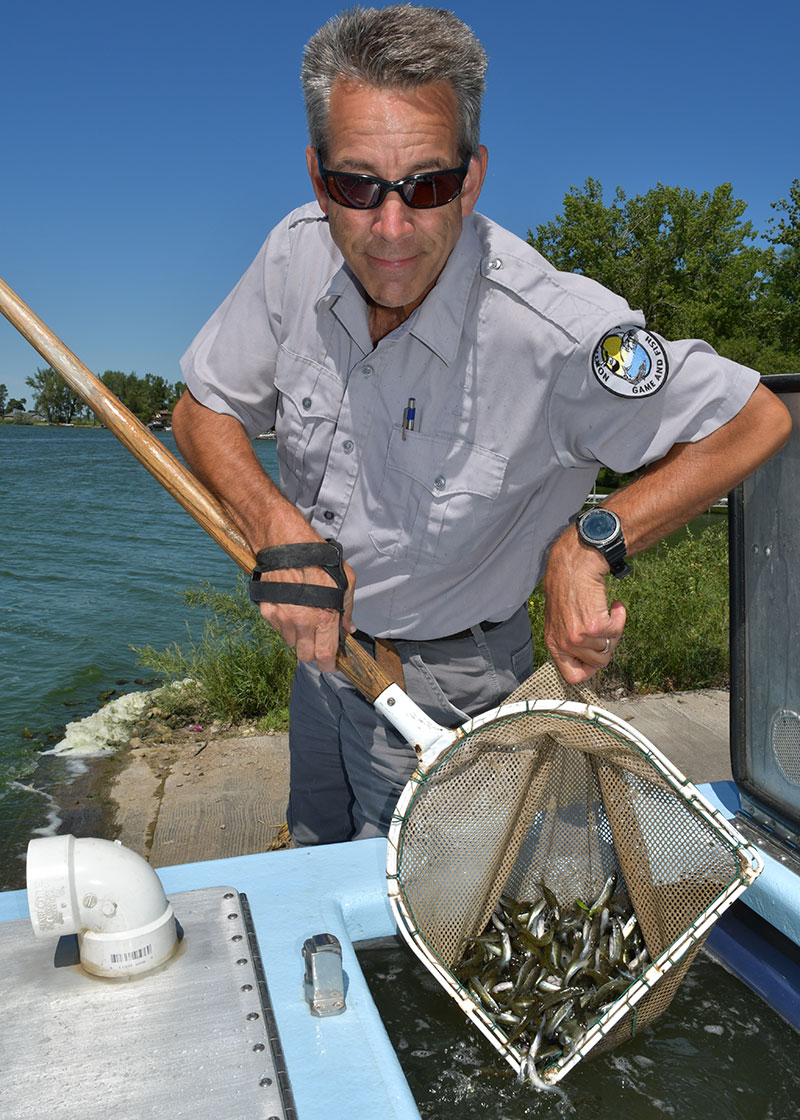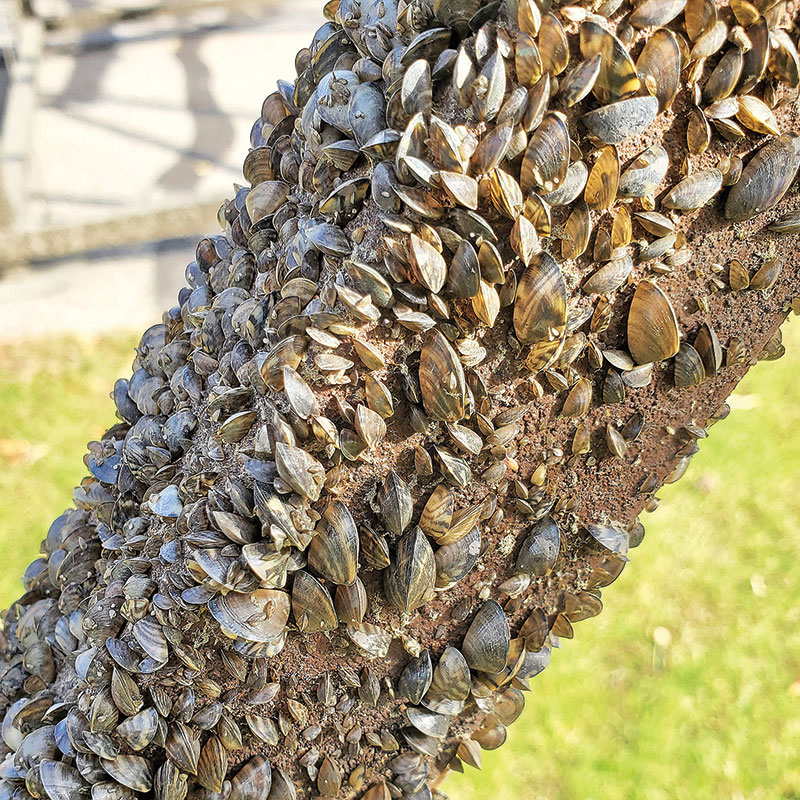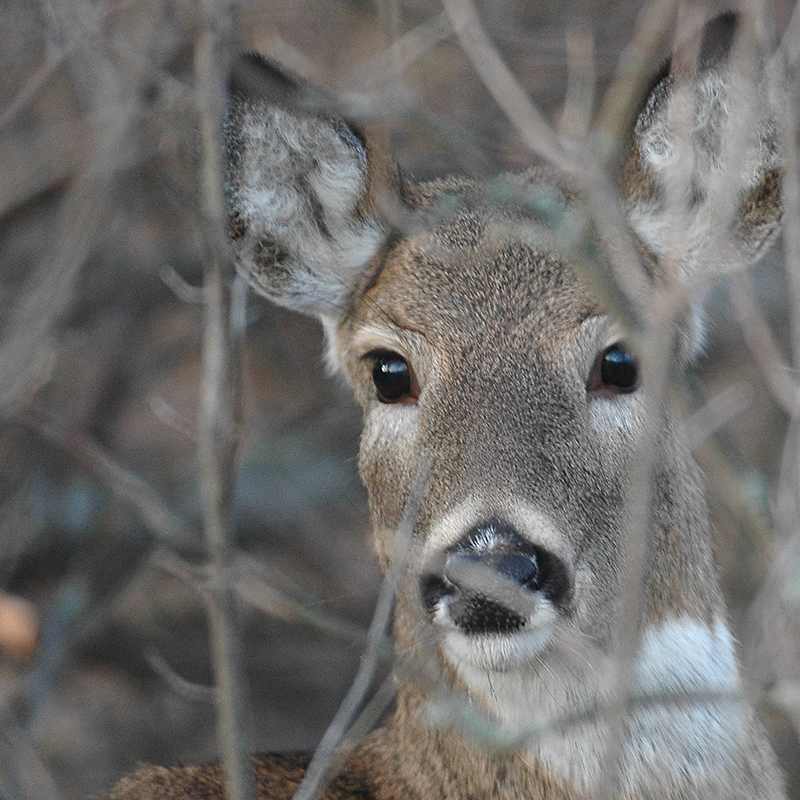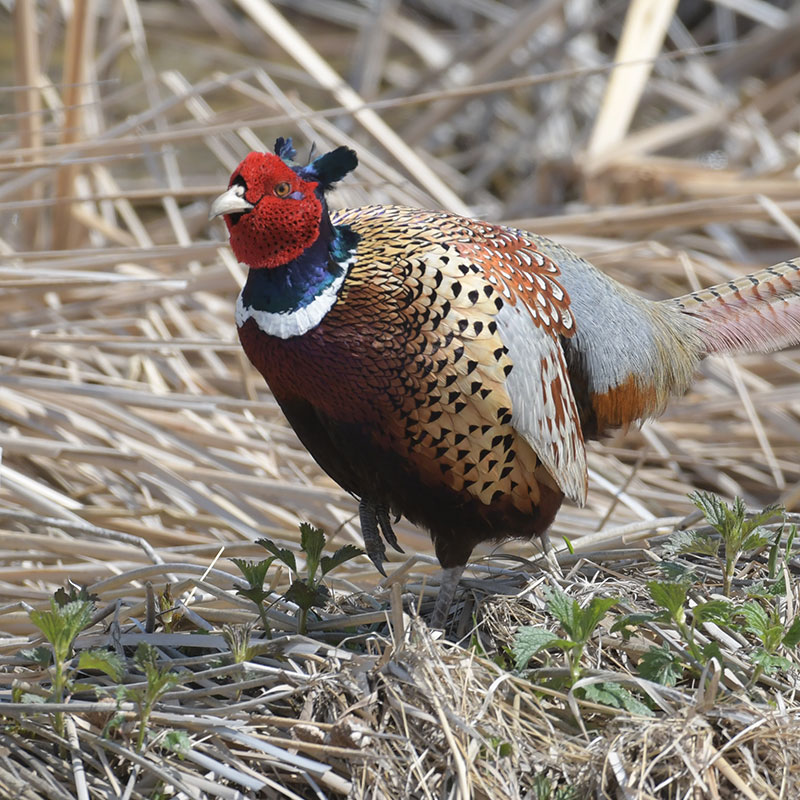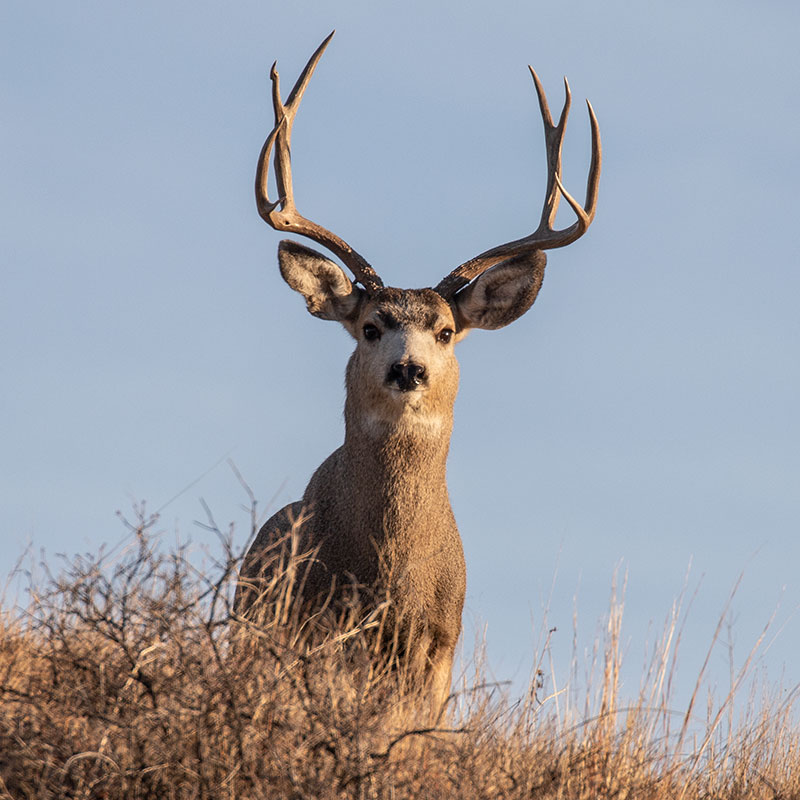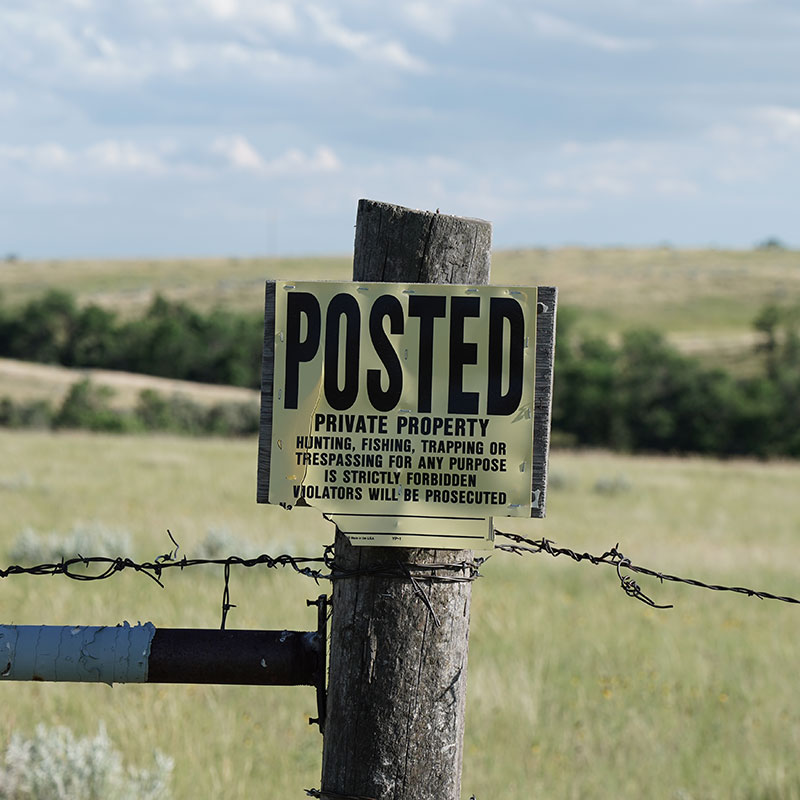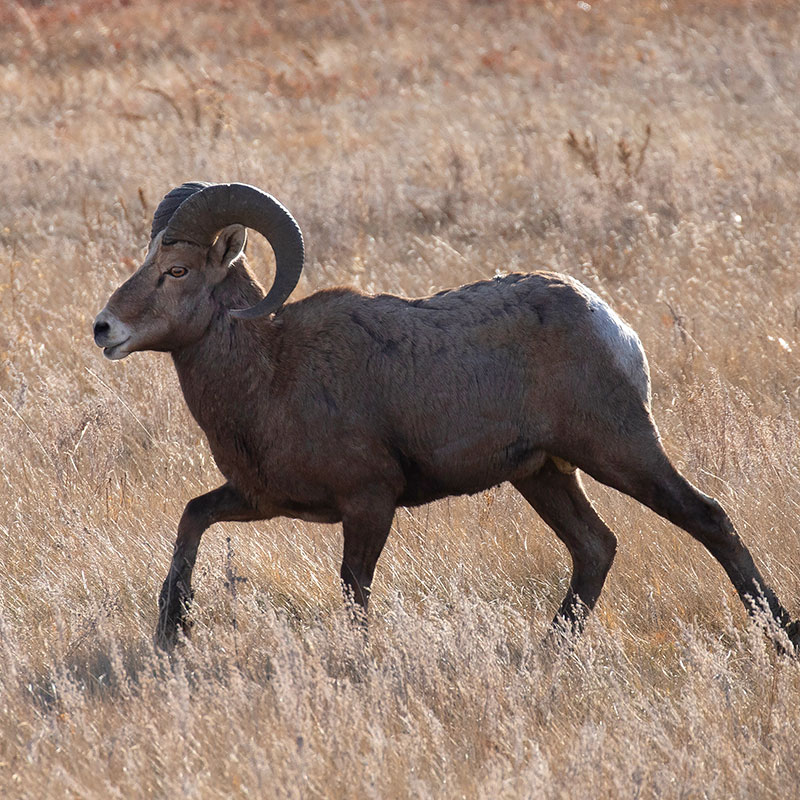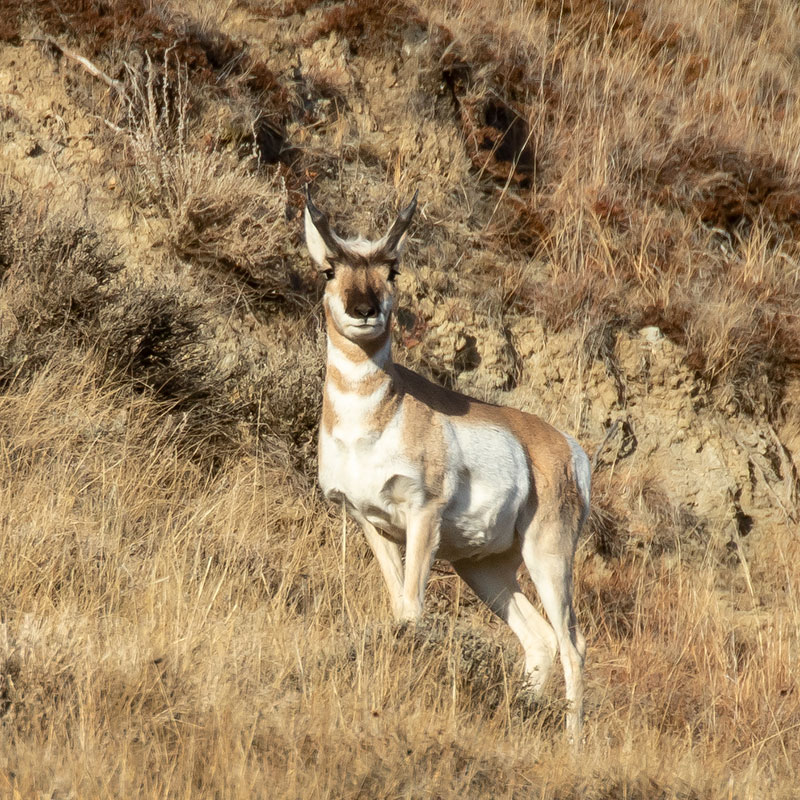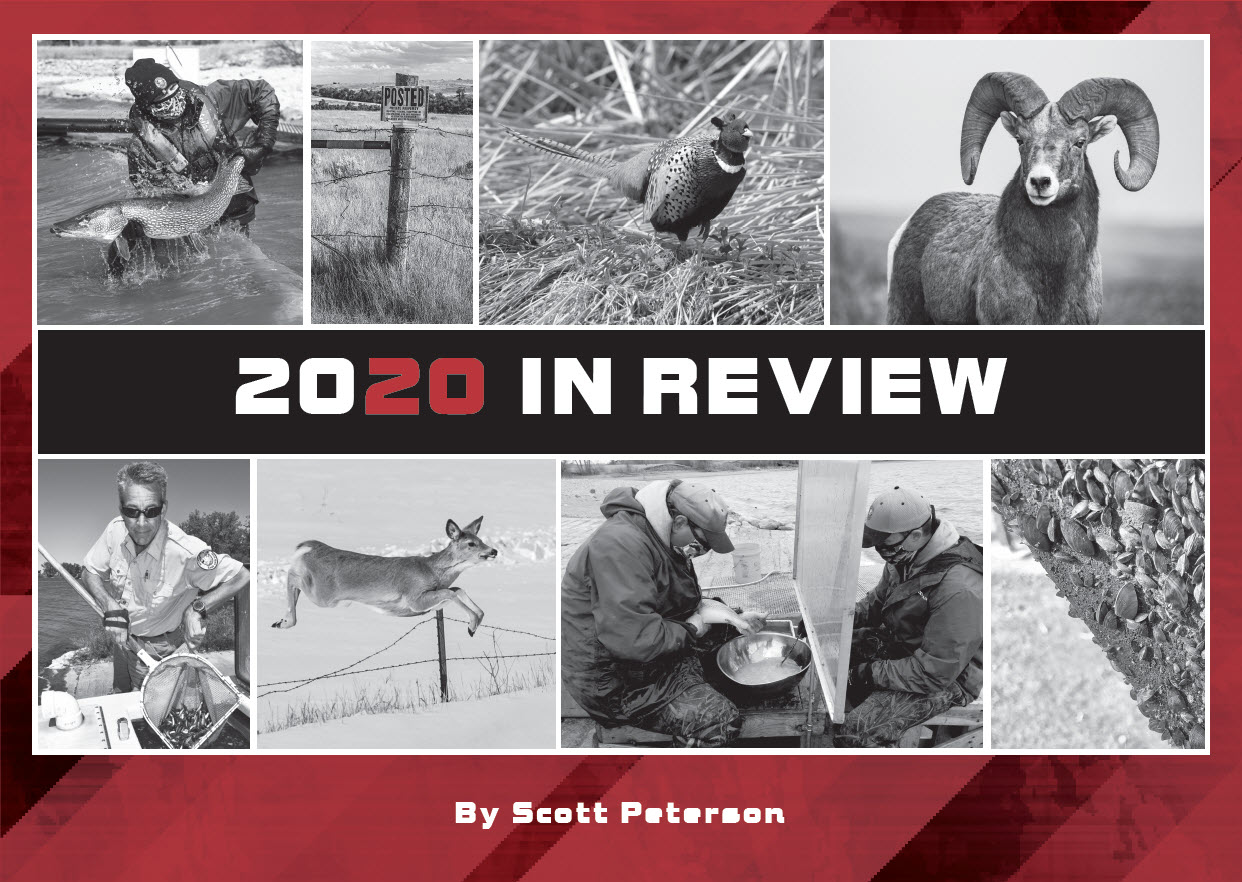
To say that 2020 has been challenging would be a serious understatement. As we approached mid-March, the unimagined happened and the COVID-19 pandemic began to rear its ugly head in North Dakota.
In a lot of ways, though, we were able to function because the nature of what we do for our customer base at the Game and Fish Department keeps much of our staff outdoors and socially distanced at any given time. That’s not to say that we didn’t have challenges, but for the most part, Department personnel who work in the field daily, were able to continue to do so.
The list of challenges was, and continues to be, lengthy. One of the first decisions that needed to be made was whether to host the annual National Archery in the Schools Program state tournament. This program is incredibly popular and important to many of the state’s students. However, in light of the fact that most, if not all, the North Dakota High School Activities Association sanctioned events were being canceled at that same time, we simply did not feel it would be responsible to conduct the event at the beginning of what appeared to be a serious and persistent pandemic. That was the first of many such decisions that would need to be made throughout the year.
Right on the heels of that dilemma was the challenge of figuring out a way to conduct our fish spawning operations while maintaining social distancing guidelines. The annual spawning operations are vitally important to maintaining the quality fishing our anglers have come to expect and enjoy. As a testament to the work ethic and ingenuity of Department spawning crews, they persisted and not only met egg collection goals, but surpassed them.
We also needed to figure out a way to certify several hundred new hunter education students while maintaining social distancing criteria. At the time of this writing, about 1,200 students completed the online, written and practical portions of the program that were adjusted to meet the demand during such uncertain times.
Other seasonal field work demands, such as tree and grass planting, noxious weed spraying, wildlife and fishery surveys, and others went on as planned, with some adjustments, as those important tasks needed to be accomplished. Also of note, we were the only state in the Central Flyway to conduct waterfowl surveys this past summer.
While adjustments had to be made in how we do our jobs, from private land biologists replacing drive-around tours with farmers and ranchers to driveway discussions and phone conversations, the work continued. Department game wardens also continued routine patrols without a hiccup and our licensing staff served our customers without pause.
While I could go on and on about other staff and their duties accomplished, and about the many challenges met head-on during these unprecedented times, it’s certain we lost some efficiency in the process, yet we were able to continue to function at a high level. We’ve always been proud of Game and Fish Department staff, but never more than this past year. They continued to do amazing work despite the many obstacles thrown their way. I’m not certain how much of this is sustainable, but we were able to find ways to keep delivering the high level of customer service that we pride ourselves on.
Because of the pandemic, more has been said and written about individual physical health this past year. However, the subject of mental health has also become even more important and more evident this past year. While we’ve all adjusted our daily lives to accommodate social distancing guidelines, we’ve also needed safe distractions from the ongoing pandemic from time to time. It is important to many of our state’s citizens that they be able to spend quality time in the outdoors pursuing their passions of hunting, fishing, trapping, recreational shooting, or perhaps just going for a walk in the outdoors.
In retrospect, I think that the biggest casualty for our Department, and its staff, is the reduction in the amount of personal customer interface that we’ve been able to maintain. We have grown accustomed to interacting with our customers on a regular basis over the course of the year through district advisory board meetings, civic club presentations, or even walk-in traffic at our different office locations. We’ve obviously found ways around that too, but it is not ideal or preferable and we all hope that we can get back closer to normal soon.
Record Lakes Stocked
Game and Fish Department fisheries personnel stocked a record 180 lakes across North Dakota with nearly 12 million walleye fingerlings.
The number of lakes stocked in 2020 bested the previous high by nearly 30 waters.
With record water across the state’s landscape, timing of a near record walleye production could not have come at a better time. Valley City and Garrison Dam national fish hatcheries contributed to make it happen. Garrison Dam National Fish Hatchery set a record for the most pounds shipped of the 1- to 1.5-inch fingerlings, with more than 8,400 total pounds.
Given the record walleye production, coupled with a record number of lakes stocked, resulted in a lot of driving time for fish haulers. In just the first seven days of 2020’s walleye production, haulers traveled more than 8,200 miles and stocked over 150 lakes with 7.6 million fish.
Crews had near perfect conditions with most lakes at or near record water levels, with flooded vegetation for the young fish to hide and plenty of food for them to eat, which bodes well for future fishing opportunities.
One of the biggest challenges in 2020 was access to some lakes. As a result of record rains in fall 2019, a lot of local roads in central and eastern North Dakota were flooded and often closed, thus making navigating some roads more challenging.
More Mussels
The Game and Fish Department confirmed the presence of invasive zebra mussels in Lake LaMoure, a popular boating and fishing destination in LaMoure County, after a local game warden reported the finding in July.
Follow-up sampling confirmed well-established populations of zebra mussels of various ages, especially near the dam. It is unknown how the small, sharp-shelled mussels were introduced, and there is no known method to completely rid a lake of the invasive species once they are established.
The discovery serves as a reminder that everyone plays a role in stemming the spread of mussels to uninfested lakes. Prevention remains the best way to avoid spreading aquatic nuisance species as they often travel by hitchhiking with unsuspecting lake-goers.
Since Lake LaMoure eventually flows into the James River above the city of Oakes, Game and Fish Department staff increased zebra mussel surveillance on the lower James. In addition, ANS watercraft inspections increased at Lake LaMoure.
Lake LaMoure, and the James River in Dickey County, are considered Class I ANS Infested waters. They join Lake Ashtabula, lower portion of the Sheyenne River, and the Red River as zebra mussel infested waters.
Epizootic Hemorrhagic Disease
Based on reports of white-tailed deer mortality in western North Dakota caused by epizootic hemorrhagic disease, the Game and Fish Department allowed hunters with whitetail licenses in 12 hunting units the option of turning those licenses in for refunds. Hunters who returned their licenses had their bonus points restored, if applicable, to the same number of points prior to the 2020 deer gun lottery.
The decision was based on evidence of moderate to significant white-tailed deer losses in some areas that could have affected hunting success in those locations.
The Department first received reports of isolated deer deaths in August and losses to the disease appeared to have extended into October, covering a large area of western North Dakota.
EHD, a naturally occurring virus that is spread by a biting midge, is almost always fatal to infected white-tailed deer, while mule deer do not usually die from the disease. The virus that causes EHD is not known to cause disease in humans.
The whitetail population, big game biologists noted, was not decimated and in many areas a good harvest was still needed. More than 9,000 white-tailed deer license holders were eligible for license refunds.
The last time Game and Fish made license refunds an option for hunters because of an EHD outbreak was in 2011.
Upland Birds and Waterfowl
North Dakota’s roadside surveys indicated pheasant, sharp-tailed grouse and Hungarian partridge numbers were up compared to 2019.
The survey showed total pheasants observed per 100 miles were up 38% from last year, but 14% below the 10-year average. Broods per 100 miles were up 30% from last year and 16% below the 10-year average. Average brood size was up 10% from 2019 and 5% below the 10-year average.
Game and Fish Department biologists reported good residual cover to start the year, and good weather for nesting and brood-rearing. There were some areas that experienced abnormally dry periods throughout the summer, but nesting appeared to be successful.
While the numbers were encouraging, it was noted that bird numbers in the last five years have been lower than what upland game hunters have been used to for many years, due to changing habitat conditions and the drought of 2017.
The survey indicated that sharptails observed were up 54% statewide and partridge were up 45%.
Much improved wetland conditions, along with increased numbers of waterfowl responding to those conditions, were found during the Game and Fish Department’s 73rd breeding duck survey. Much of the state had good to excellent conditions for breeding ducks in spring and breeding habitats were generally up during the breeding season.
Game and Fish Department biologists expected the fall duck flight from North Dakota to be up 9% from 2019, based on observations from its annual mid-July duck production survey.
The 2020 duck brood index was comparable to 2019’s estimate and showed 4.5 broods per square mile, 52% above the long-term average (1965-2019). Average brood size was also similar at 6.8 ducklings per brood.
Numbers of resident Canada geese, Western Prairie Canada geese and arctic nesting Tallgrass Prairie Canada geese, snow geese and Ross’s geese all remained high.
Mule Deer Counted
The Game and Fish Department’s fall mule deer survey indicated another year of good fawn production.
Biologists counted 2,116 mule deer in the October aerial survey. The ratio of 82 fawns per 100 does was similar to last year, while 36 bucks per 100 does was lower than in 2019.
Snowfall and poor ground conditions during most of the survey limited biologists to 18 of the 24 study areas.
Overall, fawn production was good, which could lead to population growth depending on the severity of this winter.
Electronic Posting Study
Hunters in Ramsey, Richland and Slope counties were encouraged to use the North Dakota Game and Fish Department’s online map resources last fall to evaluate electronic posting, a pilot study that was authorized by the 2019 state legislature
Private land that was posted electronically for the 2020-21 hunting season was viewable on a computer or smartphone or could be printed from the Department’s website
A benefit of electronic posting is the ability for hunters to determine a point of contact for the landowner, or authorized individual who posted the land. Point of contact was included on the Department’s map service application
Hunters who used the application will help evaluate electronic posting as an option for landowners to post land into the future. The electronic posting study will conclude with a brief survey. The information collected will help the North Dakota Legislature’s Interim Natural Resources Committee determine the usability of the electronic posting application and provide direction for changes required to existing law
A total of 79 landowners in the three counties participated in the pilot study by electronically posting their land, totaling 268 parcels and 38,600 acres.
CWD Surveillance Continued
Since 2009, 26 deer have tested positive for chronic wasting disease in the state. Those animals that tested positive were from hunting units in parts of southwestern and northwestern North Dakota
Testing in North Dakota for the invariably fatal disease began in 1998 with roadkilled, sick and suspect animals. In the early 2000s, Game and Fish increased CWD surveillance efforts by annually collecting samples from hunter-harvested deer, elk and moose
Typically, surveillance efforts from hunter-harvested deer focuses on a third of the state on a rotating basis, and those areas where wildlife managers are trying to manage for CWD. In 2020, given the COVID situation, Department wildlife managers prioritized efforts and focused resources and personnel in the southwestern and northwestern parts of the state where the disease continued to be of greater concern
CWD test results for the 2020 deer gun season weren’t available at the time of publication.
Additional Bighorn License Allocated
The Game and Fish Department allocated six bighorn sheep licenses for the 2020 hunting season, one more than 2019
Two licenses were issued in units B1 and B4, and one license in B3. In addition, one license, as authorized under North Dakota Century Code, was auctioned in March by the Midwest Chapter of the Wild Sheep Foundation, from which all proceeds are used to enhance bighorn sheep management in North Dakota
The number of once-in-a-lifetime licenses allotted to hunters was based on data collected from the Game and Fish Department's summer population survey, which showed a 22% increase in ram numbers from 2019 due primarily to high lamb survival last year
The objective of the 2020 hunting season was to maximize hunter opportunity in the northern badlands where ram numbers remained strong, while continuing to reduce the number of rams in the southern badlands to lessen the risk of transmitting disease to the northern population. The concern, as in past years, is the ongoing effects of the bacterial pneumonia outbreak that was first detected in 2014 that resulted in a loss of 15-20% of the adult population.
Moose, Elk, Pronghorn Licenses
While hunters were afforded more elk and pronghorn hunting opportunities in 2020, once-in-a-lifetime licenses for moose decreased slightly
After several years of increasing and record-setting moose licenses, Game and Fish issued 474 licenses in 2020, down from 479 in 2019
A total of 1,790 pronghorn licenses were available in 2020 in 15 units, three more hunting units than 2019. According to Department aerial surveys, the pronghorn population increased 6% from 2019
North Dakota’s 2020 elk season featured 523 licenses, an increase of 45 licenses from 2019 and the highest number of elk licenses issued since 2010.
2020 Numbers
- 780 – Number of any-deer bow licenses made available to nonresidents.
- 1,200 – The approximate number of students, at the time of publication, who completed the written and practical portions of the Department’s hunter education program, which was adjusted to meet the demands of students during the pandemic.
- 2,364 – Number of mule deer counted during the Department’s spring survey, indicating a 7% population increase from 2019.
- 10,000 – Estimated number of mussels collected below Kathryn Dam on the Sheyenne River. The collected mussels were relocated elsewhere in the river because it was feared that work being done to the dam would be detrimental to the population.
- 90,000 – Estimated number of Canada geese counted during the Department’s annual midwinter waterfowl survey.
- 170,000 – Number of advanced walleye fingerlings stocked in state waters.
- 800,000 – Approximate number of PLOTS acres made available to hunters.
- 2.1 million – Number of chinook salmon eggs collected during the Department’s salmon spawning operation in fall on the Missouri River System.
2019-20 LICENSES AND PERMITS ISSUEDResident | Nonresident |
|---|
Individual Fishing | 46,626 | 19,318 |
Married Couple Fishing | 13,370 | 5,660 |
Senior Citizen Fishing | 12,396 | |
Disabled Fishing | 268 | |
Short-Term Fishing | | |
10-Day | | 7,283 |
3-Day | | 26,235 |
Paddlefish Tags | 2,477 | 688 |
Commercial Tags | 9 | |
Retail Bait Vendor | 229 | |
Wholesale Bait Vendor | 30 | 4 |
Fish Hatchery | 4 | |
2019 Boat Registrations | 7,348 | |
(Third year of 3-year decal) | | |
General Game Hunting | 41,257 | 36,660 |
Small Game Hunting | 13,726 | 18,128 |
Combination License | 58,097 | |
Waterfowl Hunting | | 20,733 |
Furbearer Hunting/Trapping | 8,463 | 2,753 |
Fur Buyer | 28 | 10 |
Deer Gun Hunting | 52,347 | 571 |
Deer Gun Hunting (Gratis) | 11,981 | 292 |
Deer Bowhunting | 24,902 | 2,687 |
Moose Hunting | 406 | |
Moose Hunting | 69 | |
(Preferential Landowner) | | |
Elk Hunting | 405 | |
Elk Hunting | 83 | |
(Preferential Landowner) | | |
Turkey Hunting (Spring) | 6,085 | |
Turkey Hunting (Fall) | 3,450 | |
Turkey Hunting (Gratis Spring) | 413 | |
Turkey Hunting (Gratis Fall) | 210 | |
Habitat Stamp | 94,966 | |
Shooting Preserve | 11 | |
Fishing/Hunting Guide | 281 | 34 |
Taxidermist | 279 | 4 |
Falconry | 3 | |
Scientific Collector | 30 | 30 |
Swan | 1,624 | 1,076 |
Sandhill Crane | 2,284 | 1,555 |
2020 Special Big Game Licenses |
|---|
Licenses Available | Applications Received |
|---|
Moose | 470 | 24,027 |
Elk | 532 | 21,069 |
Bighorn Sheep | 5 | 16,935 |
FINANCIAL STATEMENT JULY 1, 2019 TO JUNE 30, 2020Type | Amount |
|---|
Income | $42,703,761 |
Expenses | $34,646,137 |
Fund Balances, Fixed Assets and Long-Term Debt |
|---|
Game and Fish General Fund | $33,434,612 |
Habitat and Depredation Fund | $1,594,095 |
Nongame Wildlife Fund | $163,669 |
Aquatic Nuisance Species Program | $983,317 |
Total All Funds | $36,175,693 |
Fixed Assets | $53,967,644 |
Department Net Worth | $90,143,337 |


